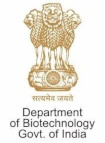Dr. Dasaradhi Palakodeti - Research
Please visit our lab website- https://www.instem.res.in/daslab/ for details about our current research. Thanks!
Some of our specific projects are centred around the following:
(1) RNA Binding Proteins
Upon transcription the dynamic association of RNA binding protein with mRNA defines the lifetime, cellular localization, processing and the rate at which a specific mRNA is translated. We are currently trying to understand role of RNA binding proteins in Stem cell function and tissue organization during planarian regeneration.
(2) miRNAs
In just over two decades of discovery of first miRNA we are overwhelmed by its regulatory potential. miRNAs are conserved eukaryotic post transcriptional gene regulator. miRNAs regulatory role are integral to several cellular processes including proliferation, differentiation, metabolism and development. We are currently trying to understand role of miRNAs in Planarian stem cells, brain regeneration and patterning.
(3) Polyadenylation
Complexity of organisms could be attributed to increase in sophistication of gene regulation by non-coding regions of genome rather than total number of coding genes itself. 3'UTRs of mRNA dictates it's fate in eukaryotic cells.We are currently trying to understand alternate polyadenylation mediated gene regulation in planarian stem cells (Neoblast) and during regeneration.
(4) tRNA derived small-RNAs (tsRNA)
Transfer RNA (tRNA)-derived small RNAs (tsRNAs) have recently emerged as important regulators of protein translation and shown to have diverse biological functions. In mouse embryonic stem cells, we identified 5' tRNA halves regulating translation of mRNAs that are critical to cell-state transitions.
(5) Ribosomal Heterogenity
When a cell transitions from one state to another, repertoire of changes take place. These involve a combination of molecular changes at levels of DNA, RNA and protein. Stem cells are specialized cells that have the ability to proliferate whilst retaining the potential to differentiate to various cell types. Upon providing with specific cues, dynamic changes take place within stem cells which enable process of differentiation. We aim at understanding the translational control of stem cell fate transitions. Increasing evidence suggests involvement of ribosome and ribosome associated proteins in translational control. Our interest is to identify such proteins which could specifically regulate translation of certain mRNAs during the course of differentiation. Few such examples are shown in the figure.
Further in collaboration with other members of TAS team, we also propose to develop tools such as transgenics, in vitro culture of stem cells that enable these models to be used effectively to study stem cell function and regeneration in a greater detail.


